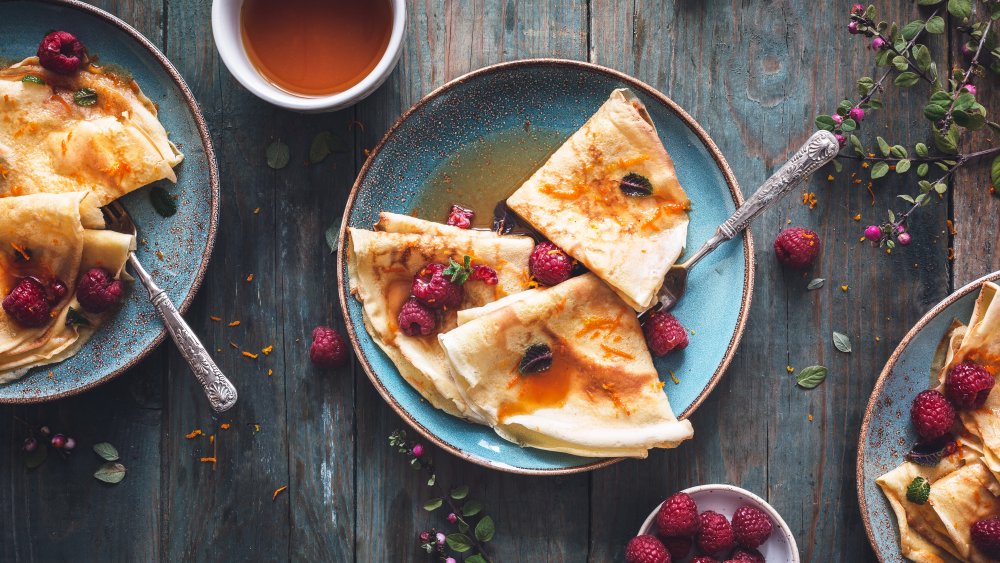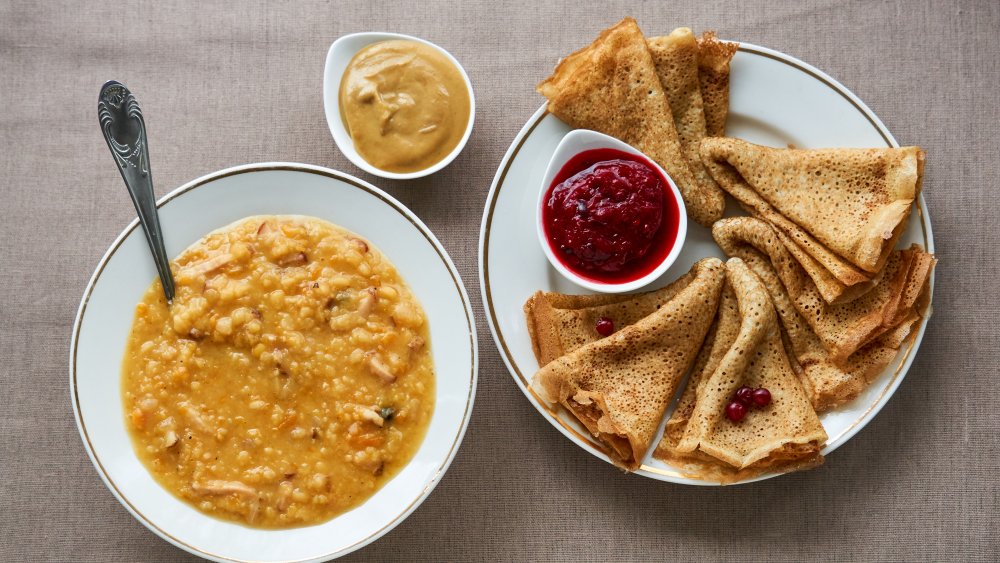The Difference Between Swedish Pancakes And French Crepes
Pancakes, like crepes, call to mind images of golden goodness topped (or filled) with some deliciously sweet and savory fillings. Normally, when Americans think of pancakes, their mind goes to fluffy mounds of stacked and drizzled (depending on your age, perhaps drowned) with syrup. Crepes, on the other hand, bring up images of Paris, baguettes, little dogs in French berets, and a sweet or savory filling.
When the Swedes imagine their perfect pancake, it's not what you would think. Upon first glance, you might think that Swedish pancakes, known as pannkakor, look very similar to the French crepe. It is not advisable, however, to call them a crepe (via Transparent Language). Although they might look quite similar in structural composition, that is far from the truth for these Swedish "flapjacks." Sweden has been cooking their pancakes for centuries, so it is safe to say they are as passionate about it as the US is about its pancakes and the French are about their crepe (via Sahswi).
How do the two differ?
Despite having a similar appearance, Swedish pancakes are actually slightly thicker when compared to the razor thin and ultra delicate crepe. Why? It all comes down to the proportions of ingredients that each recipe calls for. When comparing the recipes, the Swedish pancake batter is somewhat less liquid-y than the batter for the French crepe, calling for higher ingredient volumes (via the kitchn and Food Network). Both recipes call for eggs, all purpose flour, sugar, salt, milk, and butter, but diverge at two ingredients. The Swedish pancake requires unsalted butter, while the French recipe adds water to the mix.
They also differ on another important point: the serving method. Swedish pancakes are normally served with your choice of jam — traditionally, lingonberry or strawberry are the go-to — and whipped cream, according to the kitchn. French crepes can come filled with both sweet and savory options, so it's not unheard of to enjoy it with things like fruits, hazelnut spreads, or a steak, spinach, and mushroom mix (via The Pioneer Woman and DIY).

